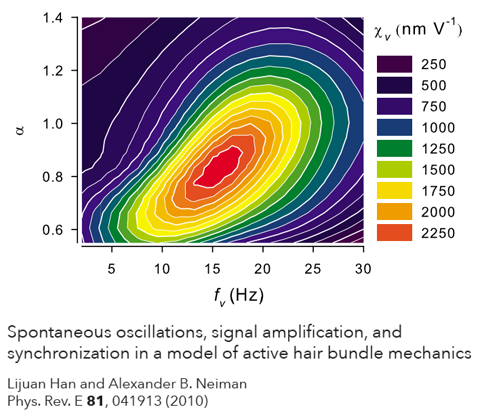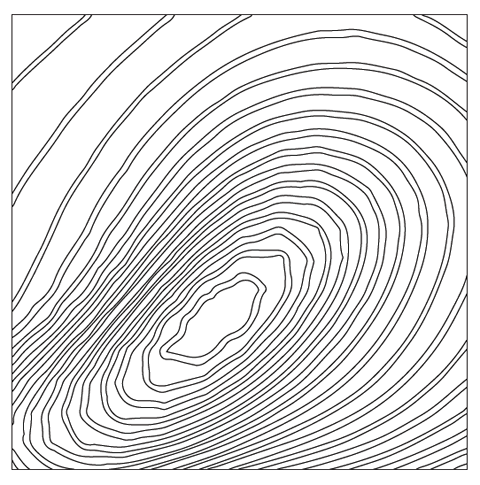Color Charge: Hearing and Hair Bundles
July 26, 2017
The PhysicsCentral team is excited to announce a new project that we've been working on: Color Charge! A coloring book for all ages (but particularly well suited to physics students who need a break from their homework), Color Charge will feature some of the most interesting and intricate images straight from the pages of the American Physical Society's journals, as well as a few of our favorites from other sources. We picked mostly based on which ones would make good coloring pages, but each picture will be accompanied by a caption explaining what's going on in the image—and in the paper that it's from. Keep an eye out for the coloring book itself, and for more images from it to be posted here!
Hearing and Hair Bundles

What's Going On?
When a sound wave hits your inner ear, it rustles thousands of tiny brush-like structures called hair bundles that protrude into the fluid that sits behind your eardrum. These vibrations cause special pores in the hair bundles to open up, letting in positively charged calcium ions. This flow of charges creates an electrical signal, which can then be transmitted along your neurons to the brain, where it will be processed and interpreted. This image is taken from a graph showing how the responsiveness of hair bundles, represented by the color, depends on a sound’s frequency (x-axis), as well as on the surrounding fluid’s concentration of calcium ions (y-axis). The complex, variable properties of these hair bundles are responsible for their ability not only to detect sound waves, but also to amplify them, and even to generate sounds of their own—a process called otoacoustic emission.
Want to color it yourself? You can download a .pdf of the book's first page by clicking the image below, and print it out! No need to stick to the original color scheme—the fun is in getting creative!















